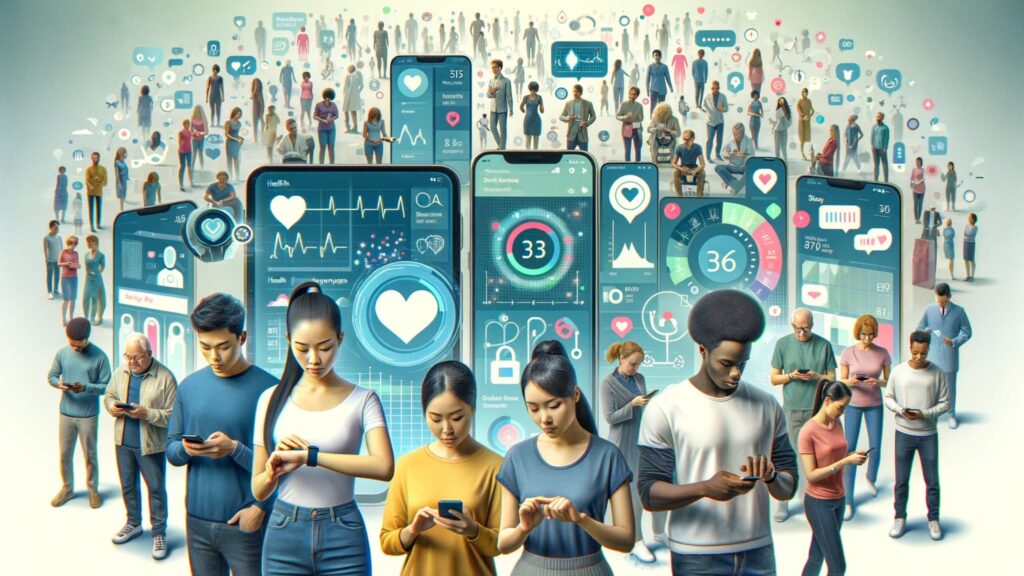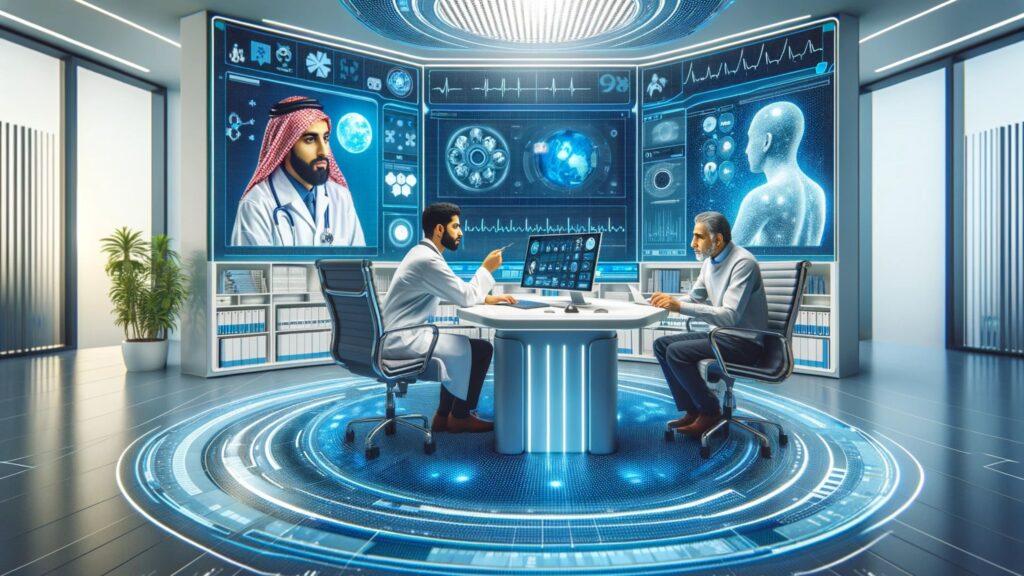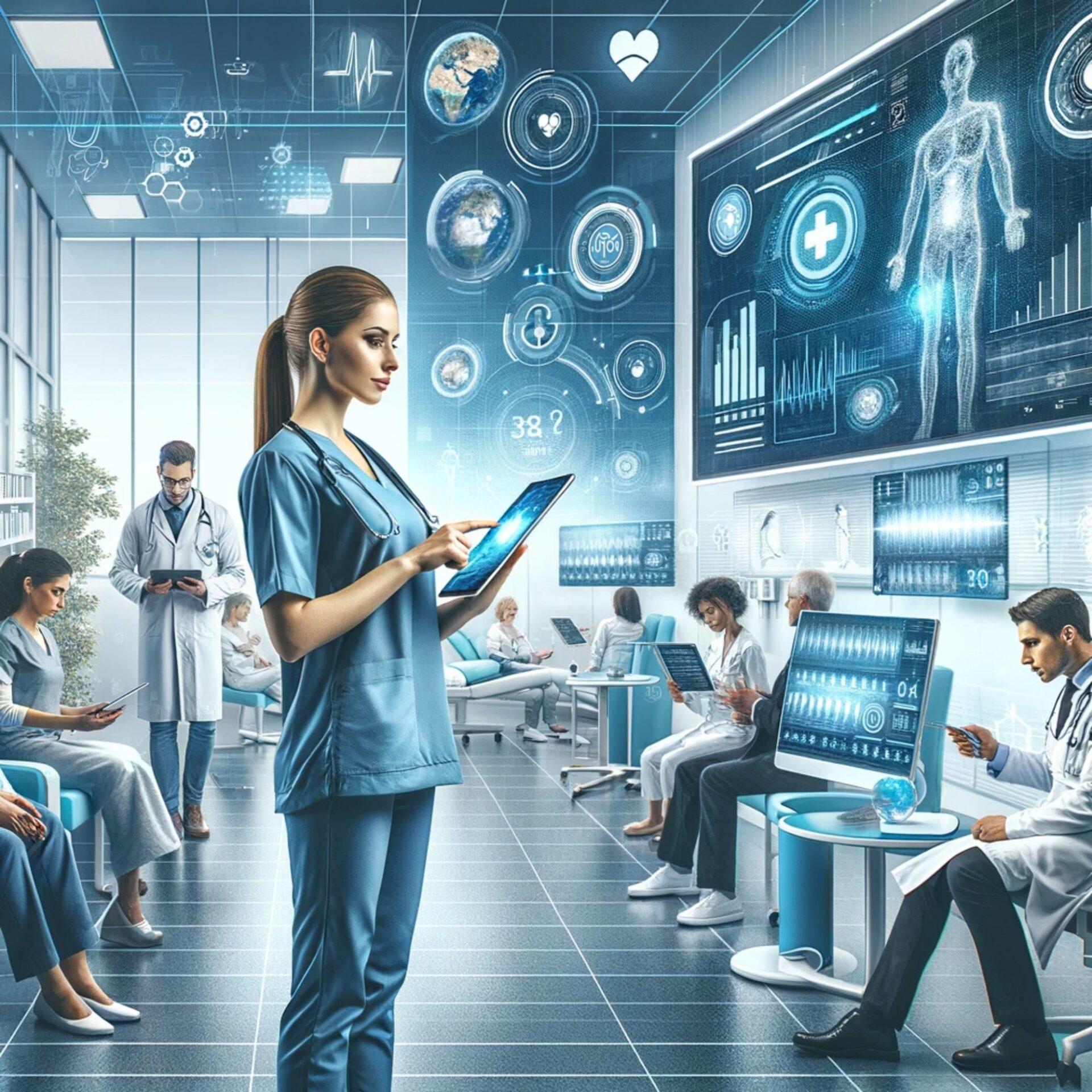The integration of communication technology into the healthcare sector has brought about a significant transformation in the way healthcare services are delivered and managed. This integration has not only streamlined various healthcare processes but has also enabled more efficient and personalized patient care.
The Evolving Landscape of Healthcare Communication
The advent of communication technology in healthcare has been a game-changer. Historically, healthcare communication was predominantly reliant on face-to-face interactions and paper-based systems. However, the rapid advancement in technology has introduced a new era where digital platforms and electronic communication methods take precedence.
Key Components of Communication Technology in Healthcare
- Electronic Health Records (EHRs): EHRs have replaced traditional paper records, enabling easy access, editing, and sharing of patient data among healthcare providers. This has led to improved accuracy in patient care and a reduction in medical errors.
- Patient Portals: These platforms allow patients to access their health information, communicate with their healthcare providers, schedule appointments, and even view test results online. This empowers patients to be more involved in their healthcare management.
- Mobile Health (mHealth): With the ubiquity of smartphones, mHealth has gained prominence. Mobile applications related to healthcare provide a range of functionalities from health monitoring to medication reminders, significantly enhancing patient engagement and self-management.
- Telemedicine: Telemedicine has emerged as a crucial tool, especially during the COVID-19 pandemic, enabling remote consultations and treatment, thus reducing the need for physical visits and expanding healthcare access.
- Big Data and Analytics: The use of big data in healthcare has led to more informed decision-making. Analytics enable healthcare providers to identify patterns and trends, thus improving healthcare delivery and outcomes.
- Wearable Technology: Devices such as fitness trackers and smartwatches collect health-related data which can be used to monitor patients remotely and provide valuable insights into their health.
Impact of Communication Technology on Healthcare
The impact of these technologies is profound:
- Improved Patient Care: Enhanced access to patient records and data-driven insights lead to more accurate diagnoses and personalized treatment plans.
- Increased Efficiency: Automation of administrative tasks and digital record-keeping streamline operations, saving time and reducing errors.
- Better Patient Engagement: Digital devices like patient portals and mobile apps increase patient involvement in their health management, leading to better health outcomes.
- Accessibility and Convenience: Telemedicine and mHealth apps offer healthcare services to remote or underserved areas, making healthcare more accessible.
- Cost-Effectiveness: Digital devices can reduce healthcare costs by optimizing resource allocation and reducing unnecessary physical appointments.
The Rise of Health Apps and Digital Phenotyping

Health apps and digital phenotyping are on the rise, revolutionizing how we manage and understand our health through technology-driven solutions and data-driven insights.
Transforming Lifestyle Management and Mental Health Monitoring
The emergence of health apps has significantly altered the landscape of healthcare, particularly in the realms of lifestyle management and mental health monitoring. These apps, accessible on smartphones and other digital devices, offer a myriad of functionalities ranging from diet tracking to mood logging, effectively supporting individuals in their health and wellness journeys.
Health Apps: A Tool for Change
Health apps have become instrumental in aiding users to adopt healthier lifestyles. They serve various purposes, including:
- Dietary Tracking: Apps like MyFitnessPal allow users to log their daily food intake, helping them adhere to dietary goals.
- Fitness Monitoring: Apps such as Strava and Fitbit track physical activities, encouraging users to stay active.
- Mental Well-being: Applications like Headspace offer mindfulness and meditation practices, aiding in stress reduction and mental health improvement.
Digital Phenotyping: Understanding Behavior through Data
Digital phenotyping, an emerging field, leverages data collected from personal devices to understand individual behaviors and health patterns. This approach uses various data points, such as:
- Mood Logs: Users can record their mood at different times, providing insights into mental health trends.
- Activity Levels: Data on physical activity can correlate with mental well-being.
- Sleep Patterns: Apps track sleep quality, which is crucial for overall health.
Utilizing Data for Better Health Outcomes
The data collected through health apps and digital phenotyping can be invaluable for healthcare providers. For instance, mood and activity logs can help professionals understand the impact of lifestyle choices on mental health. This data-driven approach can lead to more personalized and effective healthcare interventions.
Integrating Health Apps in Clinical Settings
Incorporating health app data into clinical practice requires seamless integration with existing healthcare systems. This involves:
- Data Sharing: Establishing secure channels for data transfer from apps to healthcare providers.
- Interoperability: Ensuring health apps are compatible with Electronic Health Records (EHR) systems.
- Patient Consent and Privacy: Maintaining strict protocols for patient data privacy and obtaining consent for data sharing.
Telehealth: A New Frontier in Patient Care

A Frontier in Modern Care – Expanding access, convenience, and flexibility in patient-provider interactions through remote healthcare services and technology-driven solutions.
The Evolution of Telemedicine
Telehealth, particularly telemedicine, has seen a meteoric rise, reshaping the healthcare landscape. This technology enables healthcare providers to conduct remote consultations, providing critical medical services without the need for physical proximity.
Technologies Powering Telemedicine
The backbone of telemedicine is a range of digital communication devices and platforms. These include:
- Video Conferencing Software: Platforms like Zoom or specialized medical video conferencing devices ensure secure and efficient patient-doctor interactions.
- EHR Integration: Telehealth systems are often integrated with Electronic Health Records for seamless information sharing.
- Secure Messaging: Encrypted messaging platforms facilitate communication between healthcare providers and patients.
Code Integration in Telehealth
For a more technical perspective, integrating telehealth solutions often involves using APIs (Application Programming Interfaces) that allow different software systems to communicate. For instance, integrating a telehealth platform with an EHR system might require code like:
import telehealth_api
import ehr_system
# Example function to send patient data from the telehealth system to the EHR
def send_patient_data_to_ehr(patient_id, data):
patient_record = ehr_system.get_patient_record(patient_id)
updated_record = telehealth_api.update_record_with_telehealth_data(patient_record, data)
ehr_system.update_patient_record(patient_id, updated_record)The Internet of Medical Things (IoMT) and Remote Monitoring
The Internet of Medical Things (IoMT) is a subset of the broader Internet of Things (IoT) technology, tailored specifically for the healthcare sector. It encompasses a wide range of medical devices and applications that connect healthcare IT systems through online computer networks. IoMT devices range from wearable fitness trackers to advanced diagnostic devices.
Key Components and Technologies
IoMT devices typically involve:
- Wearable Health Monitors: Devices like smartwatches and fitness bands track vital statistics such as heart rate, sleep patterns, and physical activity.
- Remote Monitoring Equipment: For chronic conditions like diabetes, remote monitoring equipment can track blood glucose levels and send this data directly to healthcare providers.
- Integrated Mobile Apps: These apps collect data from various IoMT devices and present it in an accessible format for both patients and healthcare professionals.
IoMT in Practice: Remote Patient Monitoring
A prime example of IoMT’s application is in remote patient monitoring. Patients with chronic conditions can use specific devices that regularly send health data to their healthcare provider. This enables timely interventions and continuous monitoring without the need for physical office visits.
Technical Integration of IoMT
Integrating IoMT devices with healthcare systems often involves using APIs for seamless data transfer. For example, a smartwatch that monitors heart rate might use an API to send this data to a centralized healthcare system. A simplified code snippet might look like:
import iomt_device_api
import healthcare_system
def transfer_health_data(device_id, patient_id):
health_data = iomt_device_api.get_device_data(device_id)
healthcare_system.update_patient_health_record(patient_id, health_data)
# Example call to the function
transfer_health_data(smartwatch_id, patient_record_id)
The Rise of Artificial Intelligence (AI) in Healthcare Communication
Harnessing artificial intelligence to transform healthcare interactions, diagnostics, and patient outcomes through advanced technologies and smart communication systems.
AI’s Transformative Impact in Healthcare
Artificial Intelligence (AI) in healthcare represents a significant leap forward in improving patient care, enhancing the efficiency of healthcare services, and enabling a deeper understanding of complex medical conditions. AI encompasses a range of technologies, including machine learning, natural language processing, and predictive analytics, all of which are increasingly being integrated into various aspects of healthcare.
Applications of AI in Healthcare
- Diagnostic Assistance: AI algorithms can assist in diagnosing diseases by analyzing medical images, patient history, and current symptoms.
- Treatment Personalization: AI can help tailor treatment plans to individual patients based on their unique health data.
- Operational Efficiency: AI-driven systems can streamline hospital operations, from patient scheduling to resource allocation.
AI-Powered Chatbots in Patient Communication
AI-powered chatbots are revolutionizing patient engagement and communication. These chatbots can handle a range of tasks:
- Answering patient inquiries and providing health information.
- Assisting with appointment scheduling and reminders.
- Offering initial diagnostic support based on symptom analysis.
Coding Example: AI Chatbot Integration
To integrate an AI-powered chatbot into a healthcare system, developers might use AI frameworks and APIs. Here’s a simplified Python example using a hypothetical AI chatbot API:
import ai_chatbot_api
import healthcare_system
def handle_patient_inquiry(patient_id, inquiry):
response = ai_chatbot_api.get_chatbot_response(inquiry)
healthcare_system.log_patient_interaction(patient_id, inquiry, response)
return response
# Example of handling a patient inquiry
patient_response = handle_patient_inquiry(patient_id, "What are the symptoms of flu?")Challenges and Future Prospects of Communication Technology in Healthcare
Examining hurdles and future potential in improving healthcare communication, fostering innovation, and enhancing patient care through technology-driven solutions.
Navigating the Challenges
While the integration of communication technology in healthcare has numerous benefits, it also faces several significant challenges:
- Data Security and Privacy: Ensuring the security and confidentiality of patient data is paramount. This involves robust encryption methods, secure data transfer protocols, and compliance with regulations like HIPAA.
- Interoperability Issues: Different systems and technologies need to communicate seamlessly. This requires standardizing data formats and protocols across various healthcare IT systems.
- Technology Adoption and Training: Healthcare providers need to be adequately trained to use new technologies effectively. This includes addressing resistance to change and providing ongoing support and education.
Addressing Interoperability with Code
To address interoperability, healthcare systems often use APIs that allow different software to interact. For instance, ensuring that a new IoMT device can communicate with existing EHR systems might involve code like this:
import iomt_device_api
import ehr_system_api
def synchronize_iomt_data_with_ehr(device_id, patient_id):
iomt_data = iomt_device_api.get_device_data(device_id)
ehr_system_api.update_patient_record(patient_id, iomt_data)
# Example call to the function for data synchronization
synchronize_iomt_data_with_ehr(smart_monitor_id, patient_record_id)Conclusion
The integration of communication technology in healthcare marks a pivotal transformation in the medical field, heralding a new era of enhanced patient care and operational efficiency. These technologies, ranging from telehealth and IoMT to AI-powered systems, have not only streamlined healthcare delivery but have also empowered patients to take an active role in managing their health. As we continue to navigate and overcome challenges such as data security, interoperability, and the digital divide, these innovations promise to make healthcare more accessible, personalized, and efficient.
The landscape of healthcare is set to evolve dramatically, driven by continuous advancements in technology. The future holds immense potential for further integration of sophisticated equipment, offering deeper insights into patient care and more effective treatments. While technology will continue to play a critical role in reshaping healthcare, it is essential to maintain a balance with the human touch that lies at the core of medical practice. In essence, communication technology in healthcare is not just a trend but a transformative journey towards a more connected, informed, and health-centric world.




